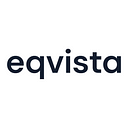What happens to ISOs during startup acquisition?
WhatsApp was acquired by Facebook in 2014. Whatsapp owners received $12 billion in stock, $4 billion in cash, and another $3 billion in stock grants for employees that would vest over four years. So, some early employees who held 1% made almost $160 million.
The chances are that some of these employees also held ISOs (Incentive Stock Options). If they held onto the shares issued by Facebook for just 2 years — chances are they would have made profits of more than 100%. But only the top 1% of management and highly-valued employees are issued ISOs and they are fairly complicated compared to regular stock options.
When a startup gets acquired, employees and founders holding the company’s shares often find themselves in a whirl of uncertainty about the future of their shares. In this blog, let’s clear the air around ISOs and how they are treated during acquisitions.
Treatment of ISOs during an Acquisition
How the ISOs are handled during a merger or an acquisition depends on the structure of the acquisition and the status of the employee’s options — whether they are vested or exercised! Let’s understand:
Exercised ISOs
If an employee has already exercised their options, they may either be cashed out or converted into shares of the acquiring company’s stock. A cash payout is a taxable event, whereas a share conversion is not.
Vested ISOs
For ISOs that are vested but not exercised yet, the acquiring company can offer a cash payout after deducting the exercise price. Once again, this will lead to a tax obligation.
Unvested ISOs
ISOs that are not yet vested can be handled in one of three ways: new stock options can be issued with a different vesting schedule, options can be converted to cash and paid over a set plan or the options could be canceled outright because employees have not yet earned them.
Accelerated Vesting
Acquisitions can sometimes trigger “accelerated vesting,” which means ISOs can be vested sooner than originally scheduled. This acceleration can also affect tax implications if employees are paid sooner. However, the limit of $100,000 applies even for accelerated vesting.
Let’s suppose, you hold ISOs of a company that’s getting acquired. These options give you the right to purchase shares of the company at a strike price(fair market value of the shares on the date the options are granted)As per the IRS, there is a $100,000 limit on the total FMV of shares that can initially vest in any calendar year and still qualify as ISOs. This value is calculated at the time the options are granted.
You were granted ISOs on 1st January 2024 to purchase 10,000 shares of your company at $15 per share. The fair market value at the time of the grant is $15 per share.
10,000 x $ 15 = $150,000
The total value of these options is $150,000. This exceeds the $100,000 limit for ISOs. So, the next step is to find the number of shares that are qualified to be exercised:
$100,000 ÷ $15 = 6,666.67shares
So only the first 6,667 shares qualify as ISOs.
10000 -6667 =3333 shares
The remaining 3,333 shares will be treated as NSOs because they represent the excess value over the $100,000 limit.
Swapping ISOs for Acquiring Company’s shares
During acquisitions, ISO holders have the option to exercise their options early to benefit from the sale, or the acquiring company might provide a cash payout or swap for its stock, depending on the acquisition terms.
Important Factors that can affect ISOs during an Acquisition
Let’s look at some of the other factors that can affect ISOs during an acquisition:
Vesting Schedule Adjustments
The acquiring company can set up new vesting schedules for cash and stock incentives awarded to employees. It’s mainly done to retain personnel from the acquired company.
Lock-Up Periods
Lock-up periods are used during acquisitions to restrict the sale of shares by the employees of the acquired company for a set duration. This is set during the negotiation of the acquisition terms and helps to stabilize the stock price and control a sudden influx of shares into the market.
Holdbacks
Holdbacks mean keeping some of the purchase money after the deal is finalized. This approach can hold back some or all of an employee’s stock until they meet certain financial targets, operational objectives and timelines. Holdbacks come with rules and timelines, set to encourage important employees or founders to stay with the company that bought them.
Escrows
In mergers and acquisitions, escrow involves placing part of the purchase amount into an account managed by an impartial third party known as an escrow agent. This is applicable for cash payouts and equity compensations. The escrow account holds these funds for a designated period to cover any breaches of agreement that might occur after the deal is locked in.
Triggers
Top employees, executives, or founders are eligible for special terms and bonuses when the company is involved in a deal. A single trigger means all stock immediately vests if the company is acquired or goes public. A double trigger means the employee’s stock vests only if the company is acquired or goes public and they are subsequently laid off by the new owners.
Eqvista Can Help You Steer a Direction in an Acquisition
If you’re looking for expert advice on equity tax issues or navigating employee stock options before or during an acquisition, Eqvista can help. If your company has issued ISOs, NSOs, RSUs, or other types of equity, cap table software can assist you with planning for different scenarios so that you can get the best results.
Even if you are not getting acquired any time soon- it’s a good thing to have your cap table planned well to avoid inconsistencies in the future.
Contact Eqvista today.
